Several new and recent studies have affirmed that the waters surrounding South America – from Peru to Chile to Argentina to Brazil – were several degrees warmer and sea levels multiple meters higher than today until the Little Ice Age centuries.
A new study suggests ~4,000 to 5,000 years ago coastal Argentina’s sea surface temperatures were 18.5 to 22.5°C. Modern mean SST are 17°C in this region, which is 2-5°C colder. Back then, marine species could survive 1,000 km south of where they do today, and sea levels were 3-4 meters higher.

Image Source: Richiano et al., 2022
Another new study affirms that the coast of Brazil in the equatorial Atlantic has been expanding seaward both in recent centuries and for the last several millennia. Relative sea level was between 3 and 4.6 m higher than today between 7,000 and 5,000 years ago before rapidly receding to today’s levels.
A rock formation has biomarker (corals) evidence that sea levels were still ~2 meters higher than today as recently as “908 to 748 cal aBP” (see photo).
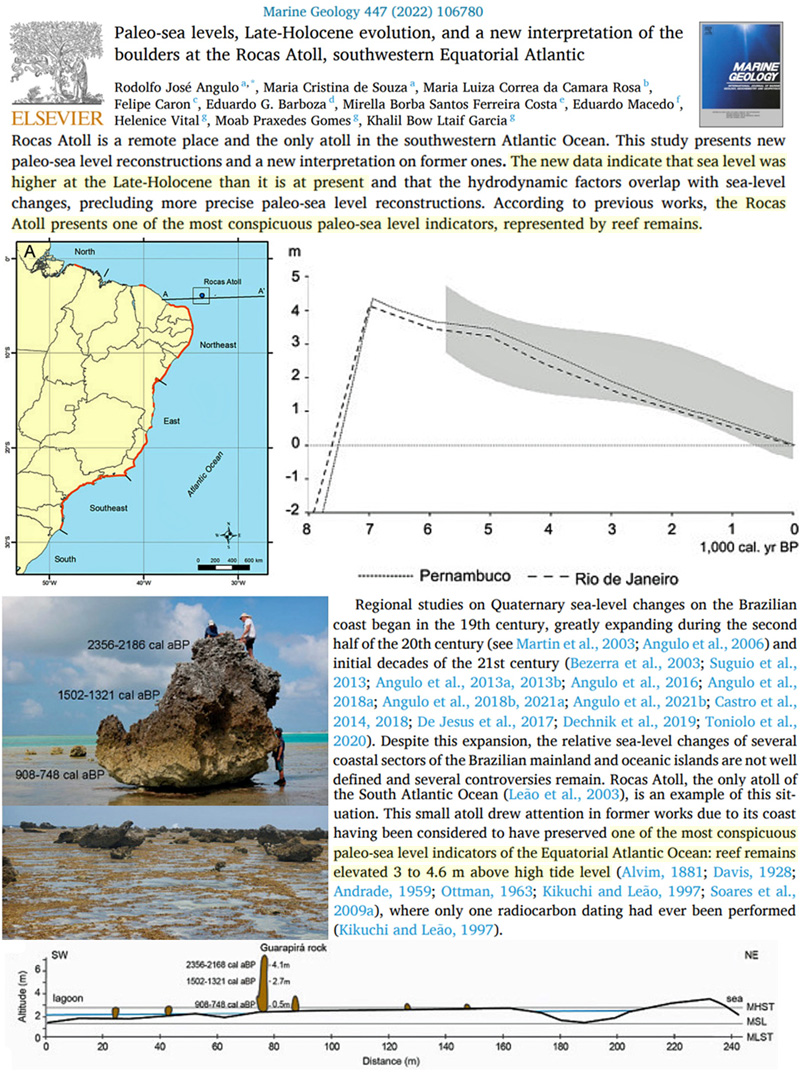
Image Source: Angulo et al., 2022
A 2021 study (Cruz et al.) used microvertebrate fossils to determine Pampas, Argentina’s surface temperatures were “between 1.7°C and 4.4°C…higher than the current” during the 19th century.
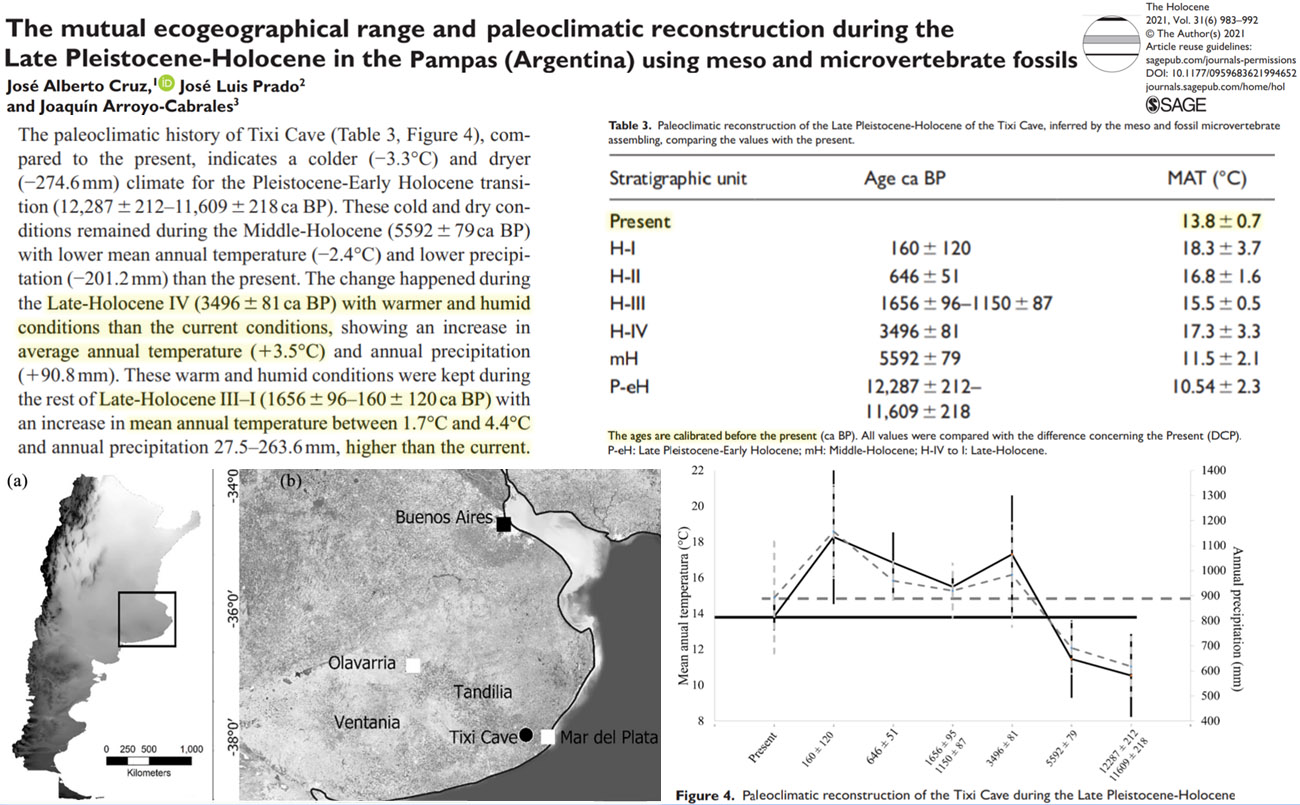
Image Source: Cruz et al., 2021
The southern tip of South America’s sea surface temperatures have undergone “marked cooling” during the last 800 years, with “particularly low [temperatures] during the most recent decades” (Bertrand et al., 2017). The reconstruction indicates temperatures have fallen nearly 4°C in the 900 years.
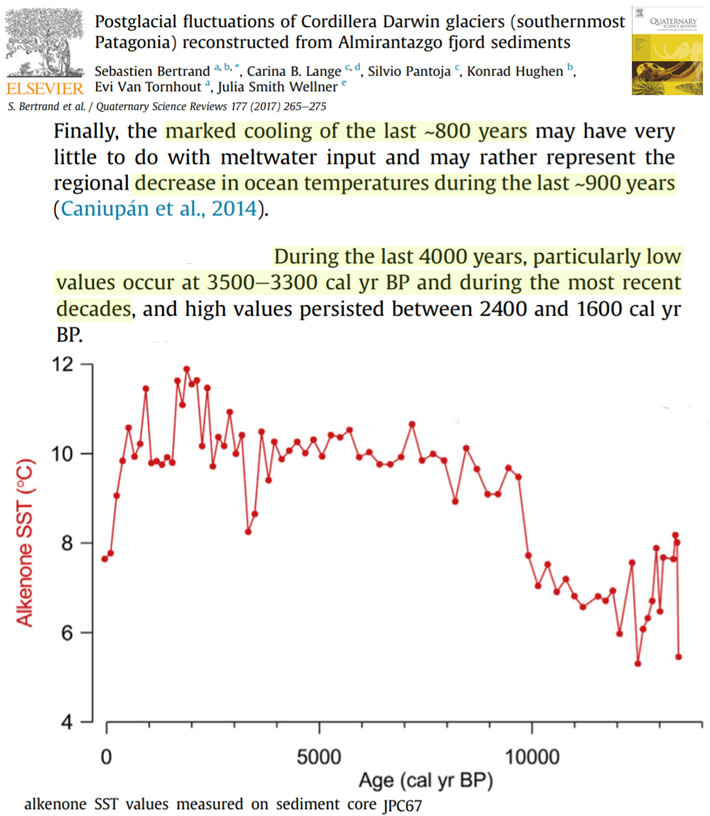
Image Source: Bertrand et al., 2017
Also in the last 900 years (“since ~0.9 cal ka BP”) Chilean sea surface temperatures (SST) have undergone “a very strong decrease in SST of ca. 2°C…over a period of ~300 year” (Caniupan et al., 2014), and the colder temperatures have remained “comparatively low” to the present.
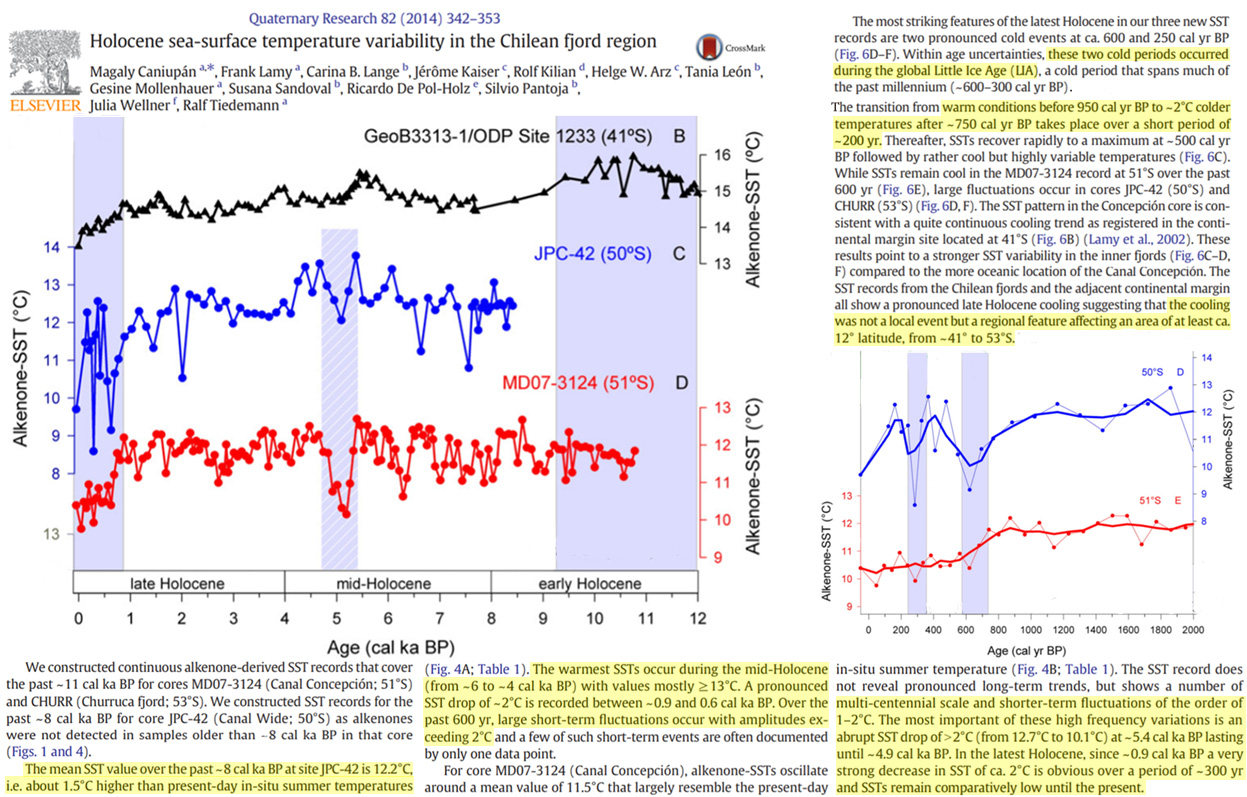
Image Source: Caniupan et al., 2014
Another reconstruction of southern Chile’s sea surface temperature record has temperatures falling 2.2°C over the last 1,000 years, or from 14.3°C during the Medieval Warm Period to 12.1°C today. SSTs were still about 1°C warmer than today during the 1600s before abruptly falling to today’s colder temperatures.
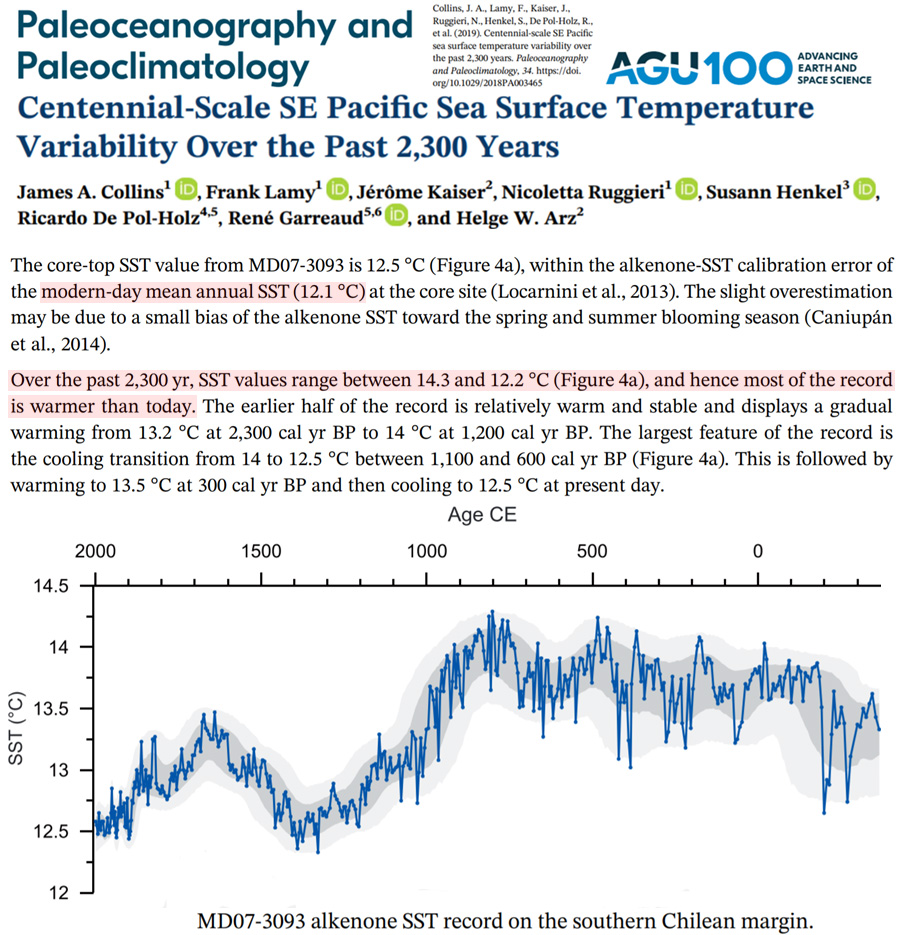
Image Source: Collins et al., 2019
Sea surface temperatures along the coast of northern Peru were “~4°C warmer than present-day SST” during the last 3 to 4 millennia before rapidly cooling to today’s much colder temperatures (Salvatteci et al., 2019). Notice the reconstructions in both “i” and “j” indicate the SSTs of the most recent 50 years (black stars) are the coldest of the last 10,000 years.

Image Source: Salvatteci et al., 2019
The presence of hake fish remains at 53°S (southernmost South America) dating to the Middle Holocene suggests temperatures needed to have been 11-12°C at that time given the warmth demands of this species (Bas et al., 2020). This latitude now has SSTs 4-5°C colder (7°C) than the Middle Holocene, and hake can only be found in waters north of 47°S today.
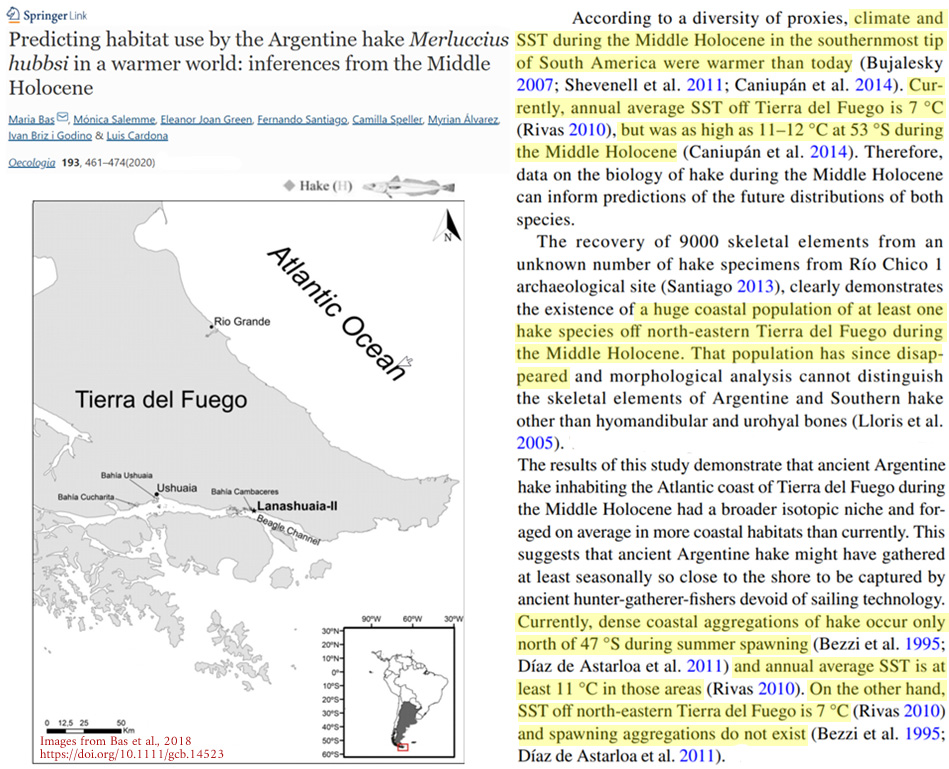
Image Source: Bas et al., 2020
Sea levels along the coasts of Brazils reached “up to +5 meters [higher than today] between 6 and 5 ka b2k” (Lopes et al., 2020). The presence of a warmth-demanding shark species remains at latitudes much colder than the water temperatures they can tolerate today also suggests regional SSTs were much warmer a few millennia ago.
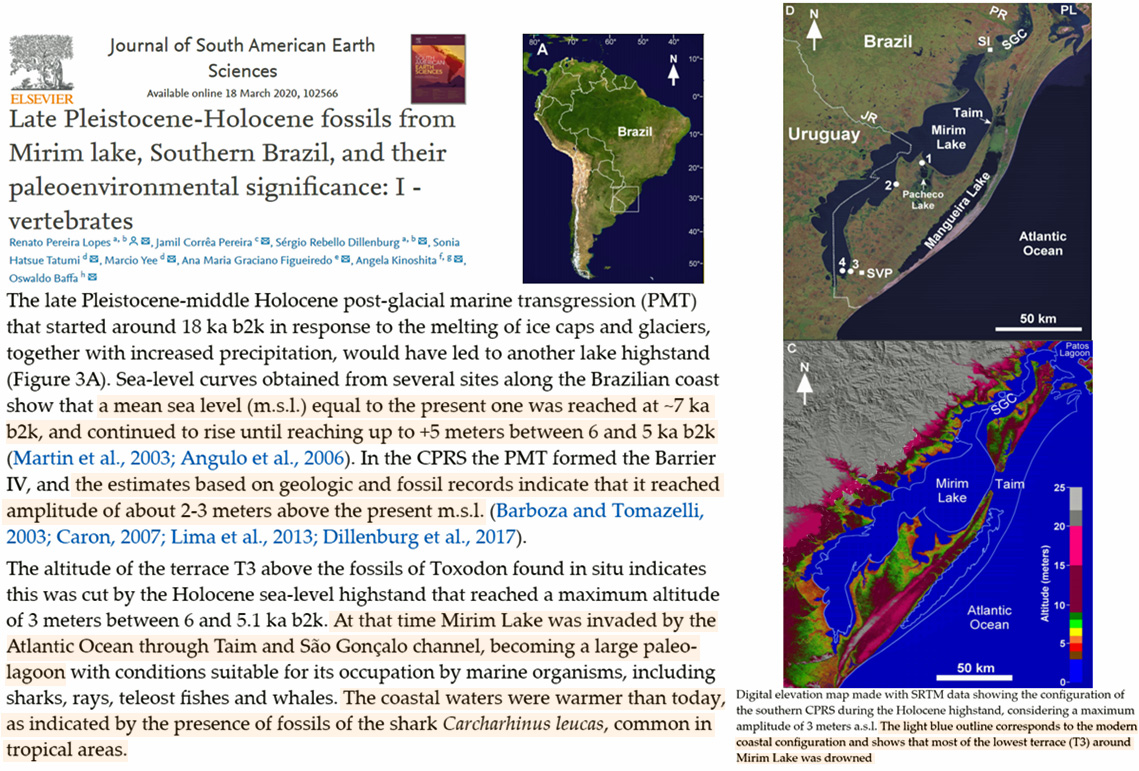





Stay dry for me, Argentina.
The planet was warmer 5000 to 9000 years ago by some amount.
So see level should have been higher by some small amount.
A few meters higher seems hard to believe from thermal expansion alone.
All climate proxies are local, and very rough estimates.
That means they could be wrong.
Consensus climate science claims:
— Approximately 125,000 years ago, the sea level was approximately 8 meters higher than it is today. This was during the Sangamonian Interglacial, the last time the north polar ice cap completely melted. After this peak in sea level, ice returned to the planet. Global sea level was never higher than today before 125,000 years ago.
This study does nothing to refute the consensus science.
Nor does it address claims of a coming climate crisis.
So it does nothing to refute modern climate alarmism.
You are of course free to believe that your claim is true, but you have failed to provide any substantiation for your claim.
In contrast, hundreds of studies from sites all over the globe indicate ocean basins had about 2 to 3 meters more water in them about 7,000 to 5,000 years ago (mostly due to much less water locked up on land as ice, not thermal expansion).
Here are a few of the many papers contradicting your claim: https://notrickszone.com/2m-higher-holocene-sea-levels/
Thanks – important palaeo-climate data putting in perspective the recent minor warming excursion.